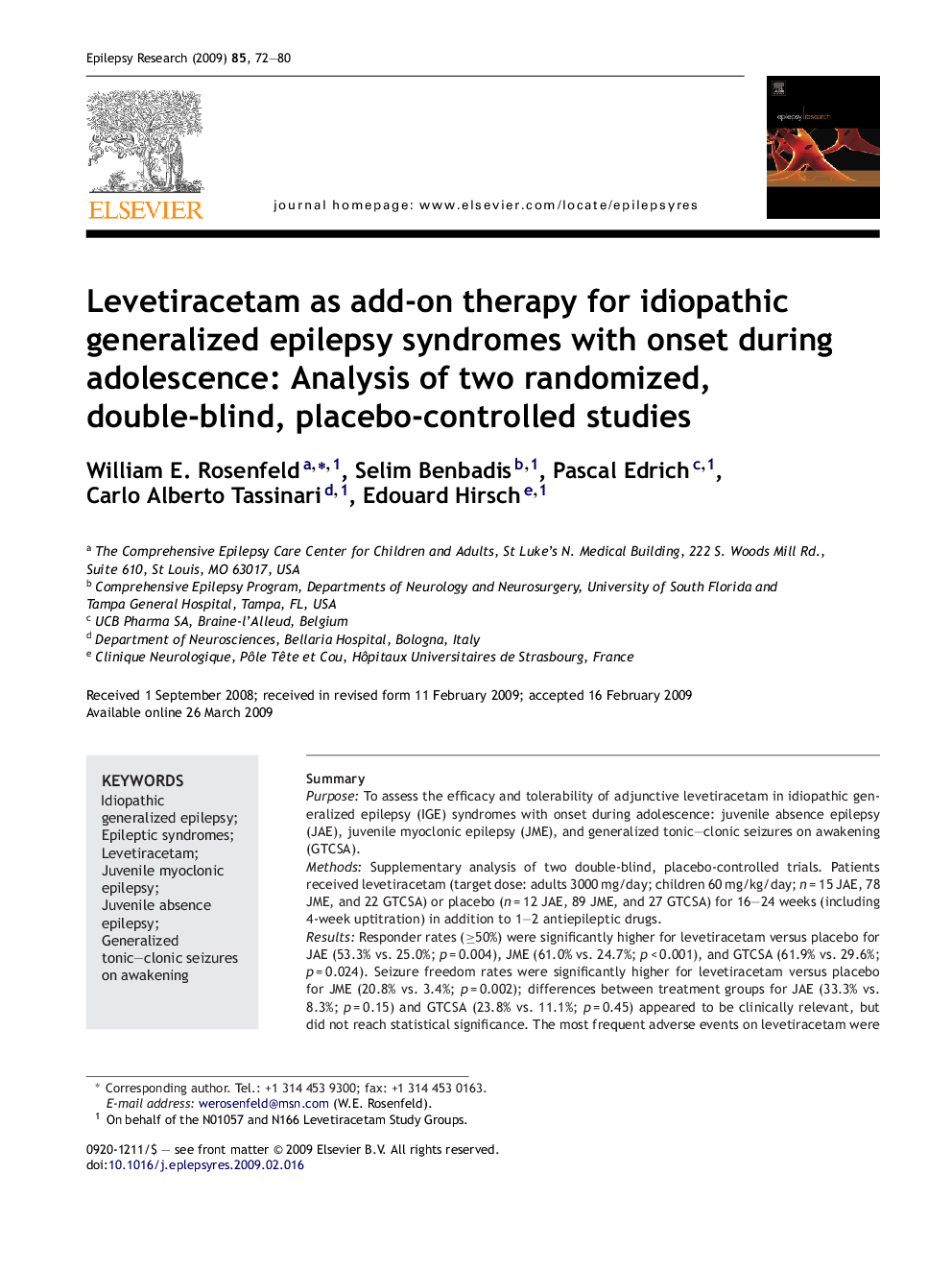| Article ID | Journal | Published Year | Pages | File Type |
|---|---|---|---|---|
| 3052796 | Epilepsy Research | 2009 | 9 Pages |
SummaryPurposeTo assess the efficacy and tolerability of adjunctive levetiracetam in idiopathic generalized epilepsy (IGE) syndromes with onset during adolescence: juvenile absence epilepsy (JAE), juvenile myoclonic epilepsy (JME), and generalized tonic–clonic seizures on awakening (GTCSA).MethodsSupplementary analysis of two double-blind, placebo-controlled trials. Patients received levetiracetam (target dose: adults 3000 mg/day; children 60 mg/kg/day; n = 15 JAE, 78 JME, and 22 GTCSA) or placebo (n = 12 JAE, 89 JME, and 27 GTCSA) for 16–24 weeks (including 4-week uptitration) in addition to 1–2 antiepileptic drugs.ResultsResponder rates (≥50%) were significantly higher for levetiracetam versus placebo for JAE (53.3% vs. 25.0%; p = 0.004), JME (61.0% vs. 24.7%; p < 0.001), and GTCSA (61.9% vs. 29.6%; p = 0.024). Seizure freedom rates were significantly higher for levetiracetam versus placebo for JME (20.8% vs. 3.4%; p = 0.002); differences between treatment groups for JAE (33.3% vs. 8.3%; p = 0.15) and GTCSA (23.8% vs. 11.1%; p = 0.45) appeared to be clinically relevant, but did not reach statistical significance. The most frequent adverse events on levetiracetam were headache (levetiracetam 16.8% and placebo 14.8%) and somnolence (levetiracetam 9.7% and placebo 3.9%).ConclusionsAdjunctive levetiracetam was well tolerated and provided effective seizure control over 16–24 weeks in patients with insufficiently controlled IGE syndromes with onset during adolescence (JAE, JME, and GTCSA), supporting levetiracetam's broad spectrum of efficacy.
